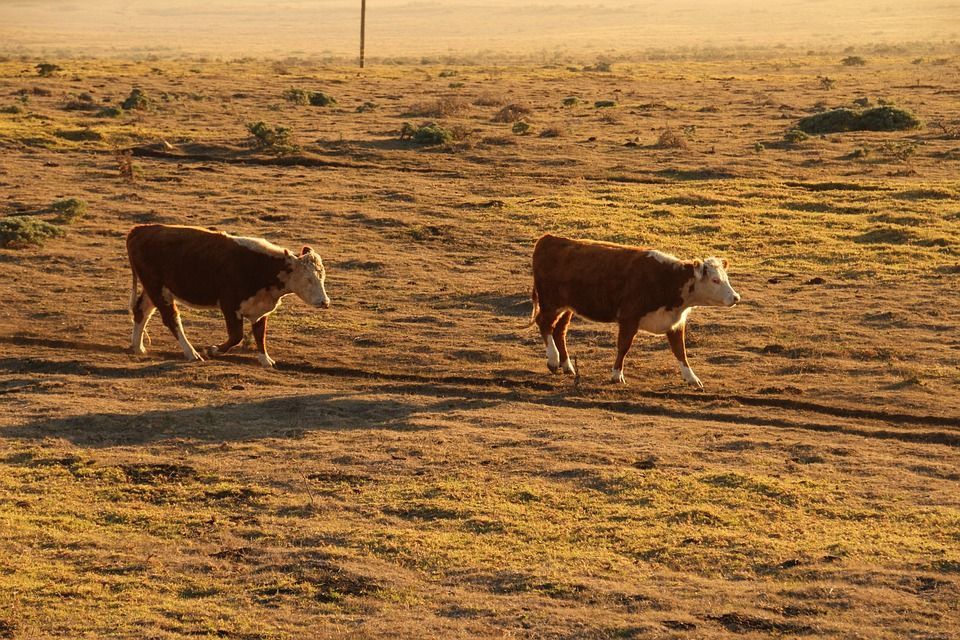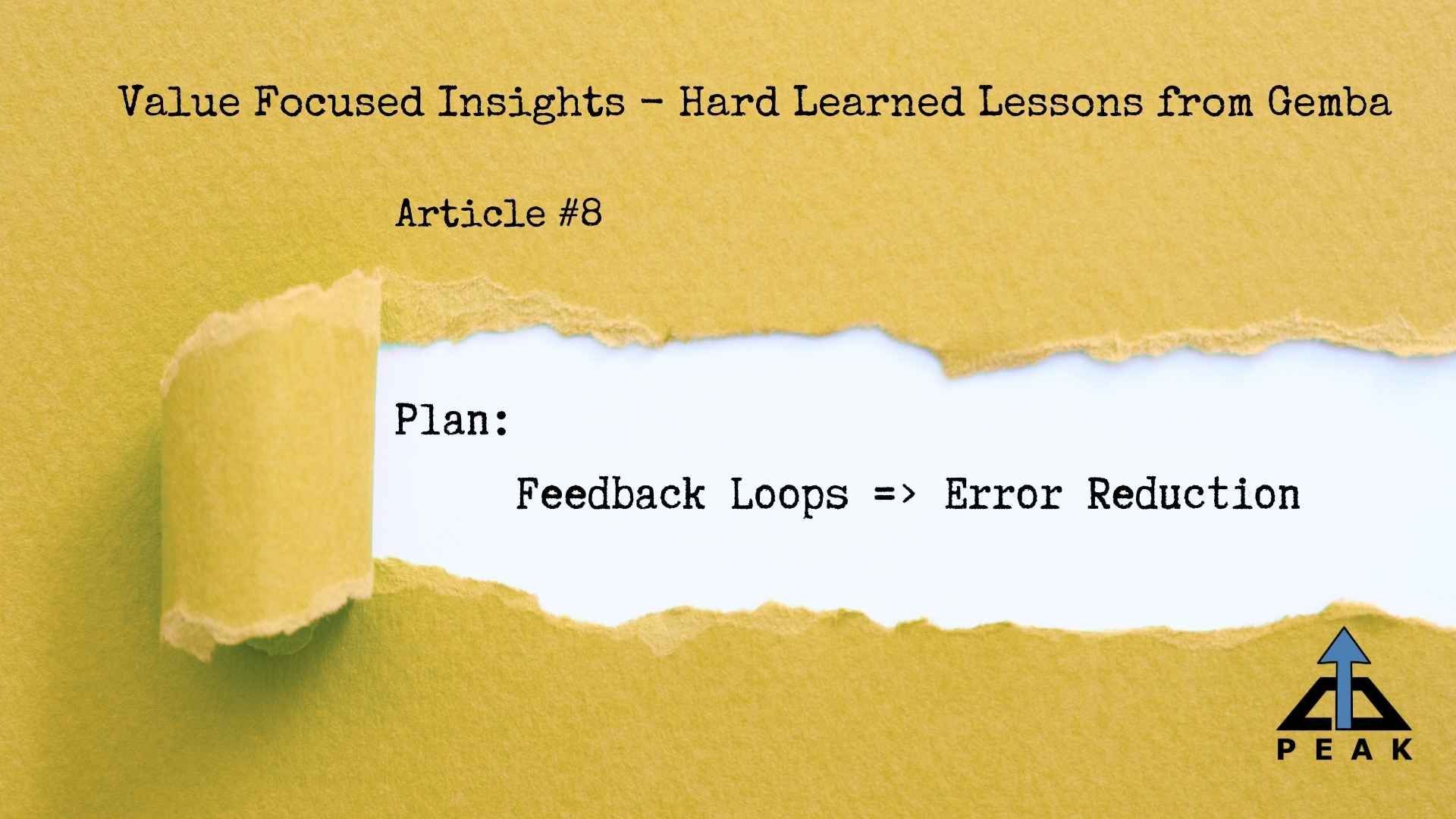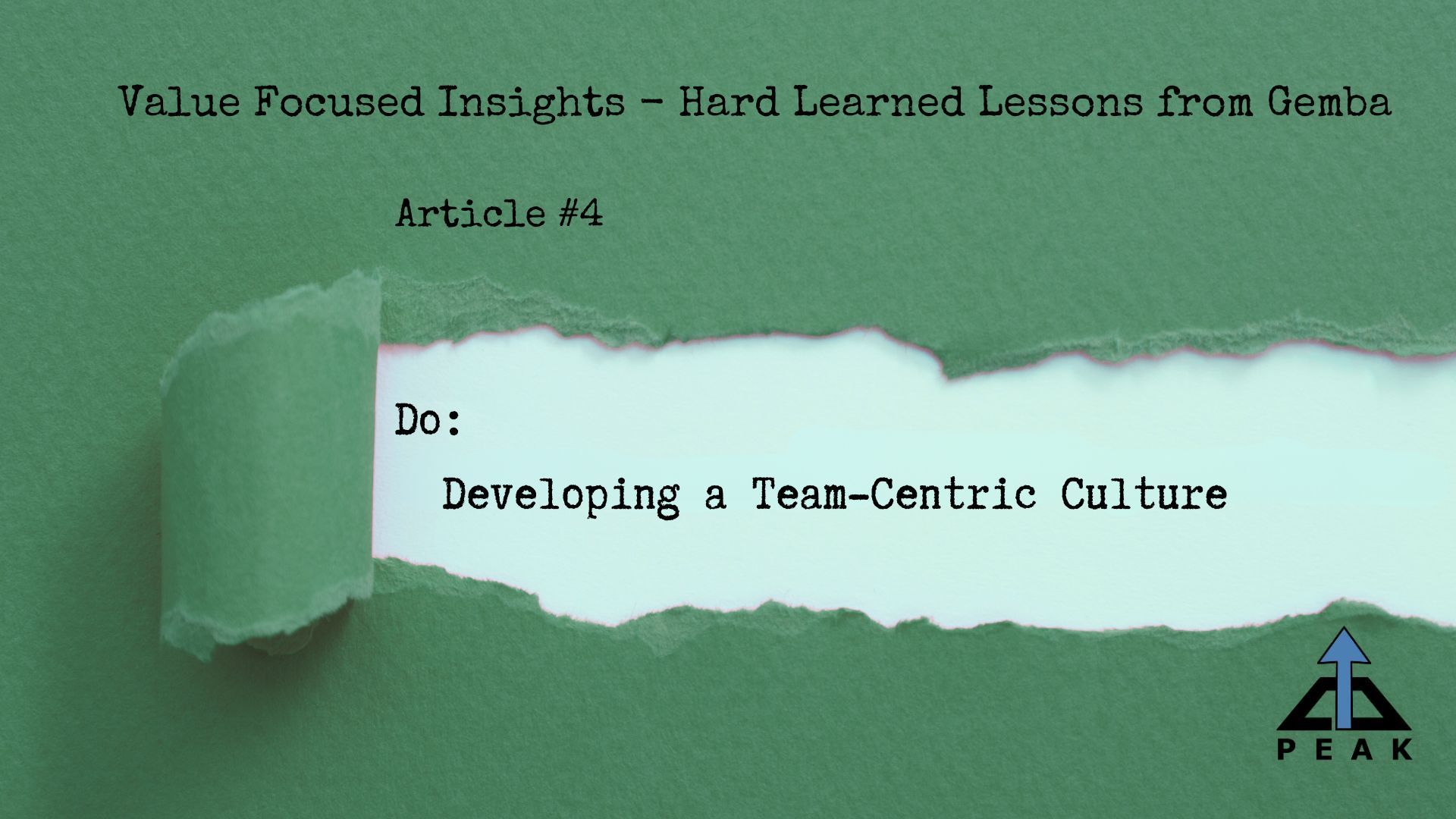Improve Your Processes by Establishing a Cow-Path
Tim Upchurch
With a few minor tweaks, your own "cow-path" can help transform your team to peak productivity.

In our previous blogs, we stressed the need for leaders to go to gemba.
What should you do when you get there?
Believe it or not, you can learn the answer by observing the behavior of ordinary dairy cows.
Have you added a cow-path to your leader standard work?
Read on to learn more about how this powerful tool can help you understand your processes better, help your teams improve effectiveness and generate great ideas for your gemba walks or future initiatives.
Confession - I am not an expert on cows. Regardless, I believe there are several lessons we can learn from them that can help us improve and understand our processes.
If you were to take some time and observe a typical cow pasture, you will find paths worn in the grass that crisscross over the entire area. Once a path is created, other cows will tend to follow it most of the time unless there is a specific reason not to, such as a fallen log across the path. Cows generally walk with their heads down so following an existing path is most likely just a natural behavior to minimize energy. Afterall, we often mindlessly do the same thing in our human world of sidewalks, crosswalks, hallways, stairs, catwalks, roads, and intersections.
Now, if you were to also watch the behavior of the cows over some period, you would notice they travel around to different parts of the pasture during the day. For example, during hotter times they tend to move to the cooler spots. These might be areas of shade, lower elevations, or by sources of water. This is because like us, cows are creatures of habit and will naturally react to their environment. To move from warmer to cooler or cooler to warmer areas they use the existing cow-paths without a second thought. As the seasons change, there are slight variations in their daily rituals due to temperature ranges during the day, but the normal routes in their movement are consistent – they do not stray from the paths when traveling between locations.
It should come as no surprise that those who study cow-paths find they are not always the most effective routes for the cows to follow. In the business world, we would say that their processes contain waste. As far as we know, there is no "Kaizen for Cows", and we assume they just take the first “process” and follow it once established. There is no daily management system embedded in their routine to trigger a problem, nor a value stream exercise that looks at the metrics and determines a change is needed to improve performance. The cows just continue to follow the path until it becomes unusable. This tendency of the cows to blindly follow the first solution has been turned into a common business expression to “don’t pave the cow-path”. This means that you should ensure you have determined your process is optimized before you automate or lock it down. A poorly designed solution without adequate feedback loops for improvement should never be part of any process in modern organizations. If any of your current processes resembles this description for the cow-path, you are not alone - so there is no value judgment implied. This is not to say that the entire concept of the cow-path as a process is bad. For our purposes it just needs a few tweaks.
"You can’t find the right roads when the streets are paved."
- Bob Marley
Whenever I was responsible for an area or process during my career, I strived to visit each location at least daily. These were not scheduled gemba walks or daily management activities that will be covered in later blogs – they were my daily cow-path. Early in my miliary career, I became very familiar with the requirement of making rounds to all assigned areas as part of being on watch. Later as a process owner, I was expected by my manager to walk my processes a minimum of multiple times per day.
As I transitioned into early leadership roles, the concept of Management by Walking Around (MBWA) was very popular. It contained many of the concepts/elements that you would expect in a cow-path: unstructured walks where you would speak to employees to improve engagement and build personal relationships to understand and provide support. Over the years I found that my early attempts at MBWA/cow-paths were not optimal and depending on the day could either be helping or hurting the team.
HOW I WAS HELPING:
- I could go and see what was happening that reports couldn’t tell me
- I could understand problems and provide support or additional resources needed
- I could witness gaps, coach personnel and understand challenges they faced
HOW I WAS HURTING:
- My information was based on that moment, it was only a data point
- I judged from that data point – I extrapolated and filled in any gaps in error
- My help provided was often not based on the biggest problem, but the one I saw
I soon realized that my cow-path should be considered a process and therefore could be improved. I started to think that I should seek to create a better cow-path by performing experiments and keeping the good and doing away with the bad. Over the years – here are some general lessons I’ve been able to learn and apply to my cow-path successfully.
Lesson 1 – Start at the closest point to the customer
We all have customers. Our goal each day is to support our customers and achieve their requirements. When conducting a cow-path it is very easy to get caught up in an issue/conversation, or otherwise get distracted and run out of time. If I started my cow-path at the beginning of my process, I may miss the opportunity to help my customer today.
Lesson 2 – Vary the start time of the cow-path
If you show up at the same time every day, people will know your routine. You will not see the full range of problems because your team will change their behavior to accommodate your visits. Change the times and shifts you observe to see the rhythm of the entire shift and culture of your team. Look for evidence of batching, how effectively shifts turnover, how consistently output matches the standard, how/when the standard process checks are performed. How much time is lost during transitions or intersections within the processes? Larger or systemic problems you learn about by varying the time of your cow-path can be used to generate good topics for future gemba walks, projects and initiatives.
Lesson 3 – Vary the route of the cow-path
Like our dairy cow, if you only stick to the well-worn path, you will miss many opportunities to learn and improve your processes. Plus, everyone will learn your route quickly and all the problems will be moved off the beaten path. See Rule 2 if you need more convincing.
Lesson 4 – Don’t assume or blame, but seek to understand
Don’t assume you can see everything at once. Hold back any initial judgements as you conduct your cow-path. There is nothing worse than “Captain Obvious” swooping in and pointing out what everyone already knows but offers no tangible long-term solutions to help the team. Try to notice the issues that prevent your process from running to standard. Look for the shadows that your current condition and practices are casting all around. Strive to go down a few levels to understand contributing factors or interactions before you claim to have the answers. Investigate any countermeasures that were initially developed to combat short term issues that have now embedded themselves in the daily activities. In larger organizations, watch for cultural differences between departments and shifts. Also pay attention to how your leaders respond to their people when problems are brought to them.
Lesson 5 – I am here to support my team, not the other way around
The first leadership lesson often taught to new US Naval officers is:
“You can delegate authority, but you can’t delegate responsibility”
One of my favorite leadership lessons was taught to me early on as a night shift superintendent:
“All problems are management problems”
If you own the process, all the problems and gaps you find during your cow-paths exist because your process is not robust enough. It’s your responsibility to correct them - to make your process more robust and able to withstand variability.
Depending on your findings, you may need or want to jump in and correct an issue on the spot. I would recommend only doing this when absolutely necessary. If you continually bypass your established help chain, you may send the signal to your team that you don’t have confidence in their ability to correct issues. For the most significant problems found you will need to assign projects or develop action lists for others to work on to correct. Regardless, at the end of the day it’s your job to support your team by getting their problems fixed. Over time, this will lead to massive improvements in output and stability.
Lesson 6 – The cow-path isn’t finished until the reflection is done.
You’ve taken the time to conduct your cow-path. You’ve walked your entire process and observed several eye-opening gaps. Don’t leave it there, it’s time to put what you’ve found into context. Take 5 to 10 minutes and reflect on what you learned. I would recommend you also document your observations. Over time, you may start to notice trends or issues that pop up and then quickly go away. These may be related to changes in the environment, systems or supporting processes that will need to be addressed for stability. Remember that your cow-path is a process, so it is NOT static or fixed. It needs to change and improve over time. After each cycle (cow-path) you should ask how it could be better or more effective. Use a simple Plan-Do-Check-Act cycle to improve your cow-path processes over time.
The ordinary dairy cow follows established but inefficient paths as it moves about its surroundings, reacting to its natural environment. Any process owner can use six key lessons to transform their daily walk into a highly effective tool for process improvement. I recommend you take the time to introduce the cow-path to your leader standard work and see how it can elevate your team to peak productivity. I would love to hear what you learn along the way. Good luck.
Cheers.
Peaks and Valleys.....












